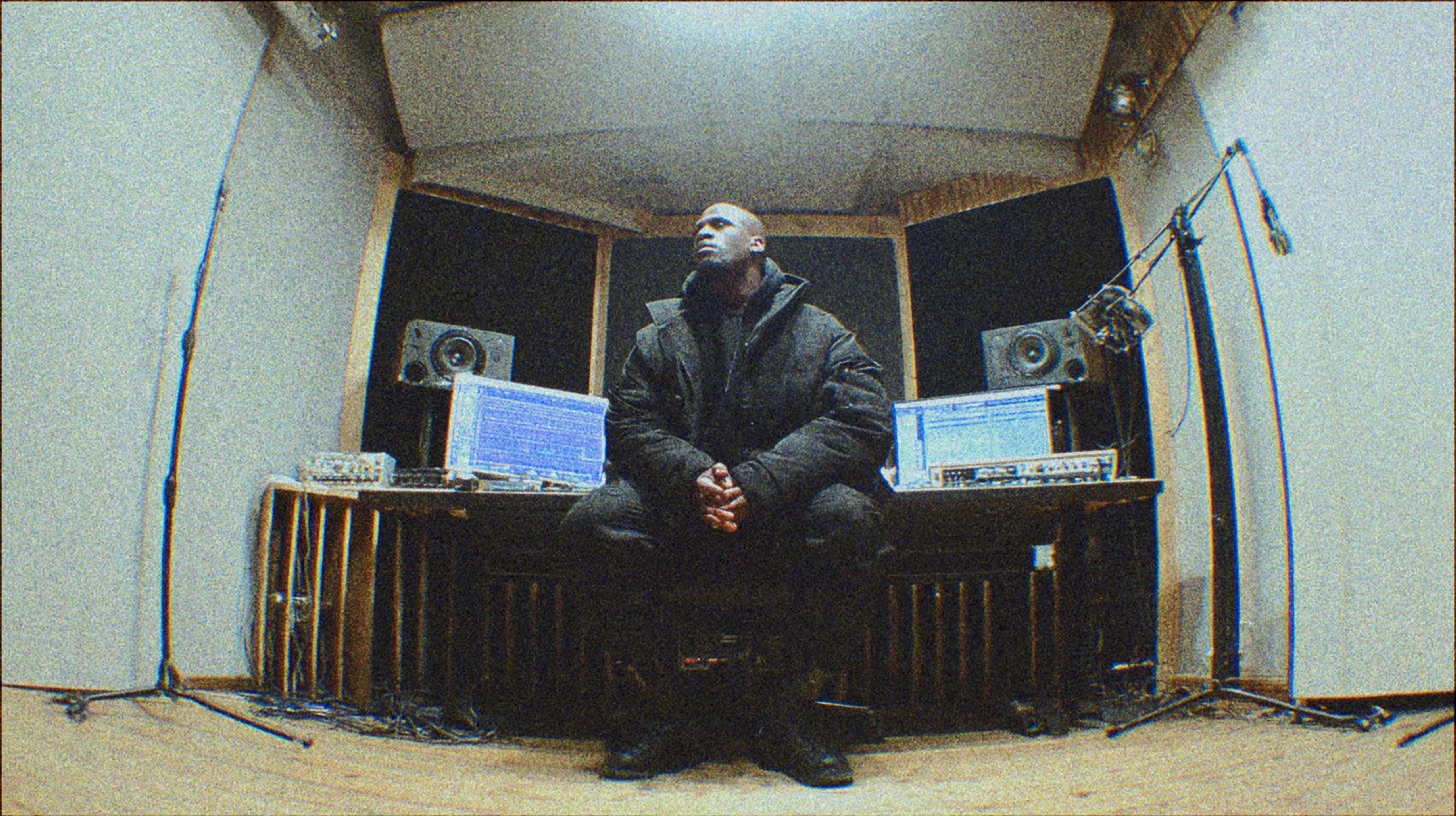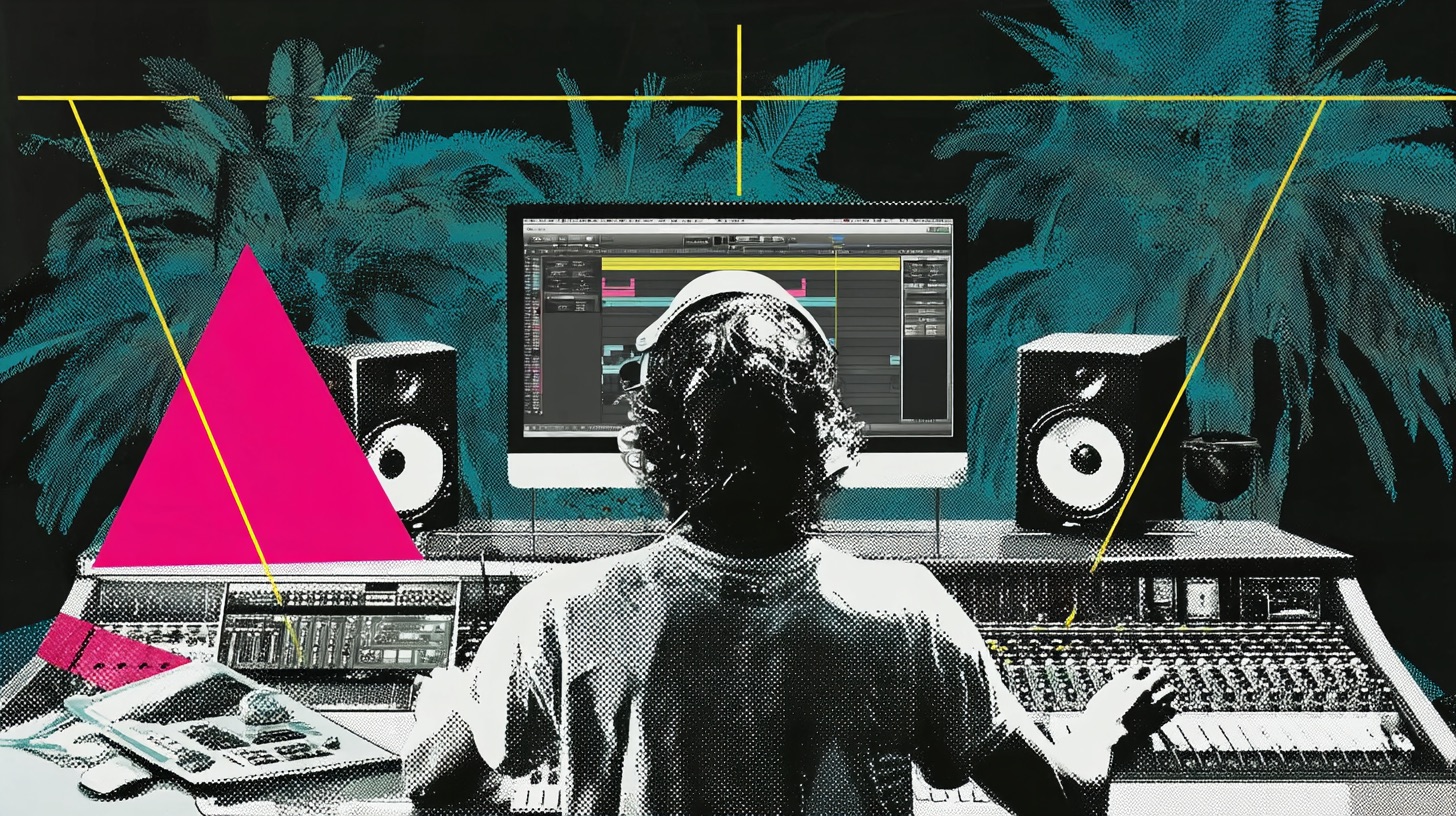
What Does Mixing Mean in Music? A Metal Producer’s POV
Nail The Mix Staff
So, you've tracked some killer riffs. The drum performance is tight, the bass is holding down the low end, and the vocals are ripping. You’ve got all the raw ingredients lined up in your DAW. Now what? You hit play, and it sounds… like a mess. The guitars are fighting the cymbals, the kick drum disappears, and the vocals are buried.
This is where mixing comes in.
If you're asking "what does mixing mean in music," you're asking the right question. It’s the critical, often misunderstood step between tracking and mastering that turns a collection of individual recordings into a cohesive, powerful, and professional-sounding song.
For metal producers, mixing isn't just about balancing levels. It's an aggressive act of sonic warfare. It’s about making 16 tracks of distorted guitars, a hundred drum hits per minute, and guttural screams all sit together in a way that’s both brutal and clear. Let’s break down what that really means.
It’s All About Balance (But Not Just Volume)
At its most basic, mixing is balancing. But it’s way deeper than just pushing faders up and down. A truly great mix starts with establishing a solid foundation before you even touch a single plugin.
Gain Staging: Your First and Most Important Job
Before you even think about EQ or compression, you need to get your gain staging right. This means setting the level of every individual track so that it’s hitting your channel and buses at an optimal level—not too quiet, and definitely not clipping.
A common pro practice is to aim for your tracks to average around -18dBFS on the channel meter. Why?
- Headroom: It leaves you plenty of room on your master fader so you’re not constantly fighting digital clipping.
- Plugin Performance: Many plugins, especially analog emulations (like those from Slate Digital or Waves), are designed to work best when they receive a signal around this level, just like real analog gear.
Get this right, and the rest of the mixing process becomes infinitely easier.
The Static Mix: Setting the Scene
Once your gain is staged, try this: do a “static mix.” Put all your plugins on bypass. Using only the faders and pan pots, try to get the best possible balance.
- Where do the rhythm guitars sit? Pan them hard left and right.
- Where does the snare live in relation to the overheads?
- How loud does the bass need to be to support the guitars without turning into mud?
This simple exercise forces you to make crucial decisions about the arrangement and the core relationships between instruments.
Carving Space with EQ
Metal mixes are dense as hell. You have low-tuned guitars, a kick drum, and a bass all fighting for space in the low-mids. You have cymbals, vocals, and guitar fizz all competing in the highs. EQ is your scalpel to carve a dedicated spot for everything.
Subtractive EQ: The Key to Clarity
Your first instinct might be to boost frequencies to make something stand out, but pros almost always start by cutting. This is subtractive EQ.
The most powerful tool here is the High-Pass Filter (HPF). You can clean up a shocking amount of mud by putting an HPF on almost everything.
- Guitars: High-pass your heavy rhythm guitars up to around 80-120Hz. You won't miss that low-end rumble, and it instantly makes room for the bass and kick.
- Vocals: You can often high-pass a screaming vocal up to 150Hz or even higher to remove plosives and body resonance that clashes with other instruments.
- Cymbals/Overheads: A high-pass around 300-400Hz can clean up a ton of kick and snare bleed, giving you more focused cymbals.
Beyond HPFs, you find frequencies that clash. Do your guitars have a boxy tone around 400Hz? Carve some of that out. Is the bass a bit woofy at 250Hz? Dip it. This is where you can dive deep into advanced techniques. To see how the pros approach this surgically, check out our in-depth guide on EQ Strategies for Mixing Modern Metal.
Additive EQ: Adding Bite and Air
Once you’ve cleaned things up, you can add some character. This is where you boost.
- Snare: Want more crack? Try a bell boost with a plugin like FabFilter Pro-Q 3 somewhere between 3-5kHz.
- Guitars: Need more pick attack and definition? A careful boost around 1.5-2.5kHz can bring that forward.
- Vocals: To add presence and help them cut through the wall of sound, a wide boost in the upper-mids (around 4kHz) can work wonders.
Taming the Chaos with Compression
A raw drum performance can have huge dynamic swings. A vocal can go from a whisper to a scream in a second. Compression is the tool you use to control these dynamics, add punch, and glue elements together.
Punching Up Drums
For metal, you often want your drums to be aggressive and consistent. This is where you can get heavy-handed with compression. An 1176-style FET compressor (like the Arturia Comp FET-76 or the UAD 1176LN) is a classic choice for snares. Use a fast attack and fast release to let the initial transient through and then quickly clamp down, making the body of the snare huge.
Gluing Buses Together
Compression isn’t just for individual tracks. Placing a compressor on a bus (like your drum bus or guitar bus) can help “glue” all the elements together, making them sound like a single, cohesive unit. An SSL-style VCA compressor (like the Waves SSL G-Master Buss Compressor) is king here. With a slow attack and quick release, it can add punch and cohesion to your entire mix.
Want to learn the nitty-gritty of parallel chains, sidechaining, and multi-band techniques? We've got you covered in our Metal Compression Secrets hub.
Building the World: FX and Saturation
Once your mix is balanced, clear, and controlled, it's time to give it depth, dimension, and vibe. This is where time-based effects and saturation come in.
Reverb and Delay: Creating Depth
A completely dry mix sounds flat and unnatural. Reverb and delay create the illusion of a physical space.
- Reverb: Use different types for different jobs. A short plate reverb (like ValhallaPlate) can give a snare drum sizzle and size without washing it out. A longer, darker hall reverb can be used subtly on a guitar lead to push it back in the mix and give it an epic feel.
- Delay: A simple, subtle slapback delay can make a vocal feel wider and more present. A stereo "ping-pong" delay timed to the track can add rhythmic excitement to a guitar solo or synth part.

100+ Insanely Detailed Mixing Tutorials
We leave absolutely nothing out, showing you every single step
Saturation: The Vibe Machine
Saturation is basically subtle, pleasing distortion. It adds harmonics that can make a track sound richer, warmer, and more "analog." Plugins like Soundtoys Decapitator or FabFilter Saturn 2 are incredible for this.
- Add it to a DI bass signal to help it cut through on smaller speakers.
- Use it on vocals to give them more grit and aggression.
- Put a tape saturation plugin on your mix bus to add a final layer of cohesive warmth.
So, What Does Mixing Mean? It Means Bringing Your Vision to Life.
Mixing is the art of taking dozens of raw tracks and making thousands of small decisions—from gain staging and EQ cuts to compression settings and reverb tails—that all serve one purpose: to make the song hit as hard as possible. It's a blend of technical science and creative instinct.
These concepts are the building blocks. But seeing them applied in a real-world session is a different game entirely. Watching a pro dial in the perfect guitar tone, automate a vocal effect, or use bus compression to make a mix explode is where the real learning happens.
If you’re ready to stop guessing and see exactly how producers like Will Putney, Jens Bogren, and Dan Lancaster mix massive tracks for bands like Gojira, Knocked Loose, and Architects, it’s time to go beyond presets. Unlock Your Sound with Nail The Mix and get the multitracks from real metal albums and watch the original producers mix them from scratch, explaining every single move.
Get a new set of multi-tracks every month from a world-class artist, a livestream with the producer who mixed it, 100+ tutorials, our exclusive plugins and more
Get Started for $1





